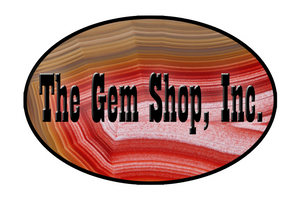Eden Valley Petrified Wood History: Collecting & Formation
Wyoming is a state rich in fossilized and agatized wood, being one of the most abundant states in petrified forests. One particular forest is known to collectors as Eden Valley Petrified Wood, which is named after the town of Eden, located in the western central part of Wyoming. The 80-mile-long area includes three major collecting areas: the Blue Forest, Big Sandy Reservoir, and Oregon Buttes. Most of the petrified wood resembles ordinary weathered wood and has an opaque cream colored coating of silica covering a silicified black to brown central core.
The Blue Forest collecting areas are located near the west end of Eden Valley and about 30 miles west of Farson. The fossil wood found in this area is well known for the light blue agate that can be associated with many of the specimens.
The Big Sandy Reservoir collecting area is located about 10 miles north of Farson in the Big Sandy State Park Recreation Area which includes Big Sandy Reservoir. The area east of the recreation area is known for petrified cluster palm wood and surface wood collecting areas.
Oregon Buttes is located just east of South Pass, Wyoming, on the eastern end of the deposit. Oregon Buttes was a major landmark on the Oregon Trail. Near Oregon Buttes, the Bridger Formation contains petrified wood. This wood consists of partially silicified black wood. Where the wood is completely replaced by silica, ranging in brown, tan, and green in color. In addition to the wood, some clear chalcedony and moss agates are found in this region.
Formation
Southwest of Rawlins, Wyoming, the Continental Divide splits to encircle a low lying basin called the Great Divide Basin This area is also called the Red Desert Basin for the red soil derived from Eocene formations that cover the surface of the Great Divide Basin. The Great Divide Basin, along with the neighboring Green River Basin, were covered by Lake Gosiute during the Eocene Epoch.
Lake Gosiute began to form in the Great Divide/Green River Basins for the first time in the early Eocene Epoch. During this time, the climate was warm and moist. Under these conditions, hardwood trees, pine, fir, magnolia and other types of trees flourished in widespread heavily forested swampland. Numerous braided streams fed into the Great Divide Basin, which filled to form ancient Lake Gosiute. Subsequent climate and tectonic activities during the lake’s life span of 4 million years, saw repeated patterns of rising and falling water levels. The fluctuation in the lake level alternately allowed expansion of the forests around the lake, or drowned the timber as the lake rose. Lake Gosiute’s ancient shoreline would also have been littered with driftwood, which became the source for Eden Valley Wood.
Over time sediment from the surrounding high areas was eroded by streams into Lake Gosiute. These sediments were then covered over by ash deposits from volcanic eruptions. As Lake Gosiute became full of eroded sediment and volcanic ash, the driftwood and the drowned timber along its shoreline was covered up. The Lake Gosiute sediments and ash deposits subsided and compacted to form layers of rock. Incorporated within these rock layers were the original driftwood and trees that formed along Lake Gosiute’s shorelines.
Eden Valley Petrified Wood formed when the original trees and branches were rapidly buried under sediment and were initially preserved due to a lack of oxygen. Petrifaction occurs when water that contains inorganic minerals, such as calcium carbonate or silica, passes slowly through the organic wood. As the original wood’s lignin and cellulose decay away, its original cellular structure is duplicated and replaced by these inorganic minerals. Elements such as manganese, iron and copper in the water and sediment during the petrification process give petrified wood a variety of color ranges.
The Blue Forest petrified wood is the most unique of the Eden Valley petrified wood types because of its color and its algae coating. Parts of Lake Gosiute were shallow and supported thick layers of algae that created the Blue Forest Petrified Wood. The driftwood and trees in these shallow water areas became coated with this algae, and as the water began to evaporate and dry, calcium mixed with the algae to form a hard but porous coating on the wood. As the algae dried it shrank away from the wood, leaving a space that was later filled with minerals. It is thought that the element Tin, caused specimens of Blue Forest petrified wood to exhibit blue crystalline quartz or microcrystalline chalcedony. Mineral laden water seeped through the algae coated wood which had been buried by sediments and volcanic ash. As the wood decayed, the wood was replaced by silica and calcite leaving petrified replicas of the original piece of wood. As the minerals coated the inside surface of the algae cast, perfect impressions of the outer surface of the wood were duplicated and preserved features not found in fossil wood anywhere else in the world. Some specimens of Blue Forest petrified wood have been found that preserve worm holes, insect borings, woodpecker holes, rare lichen fossils and small clam shells.
